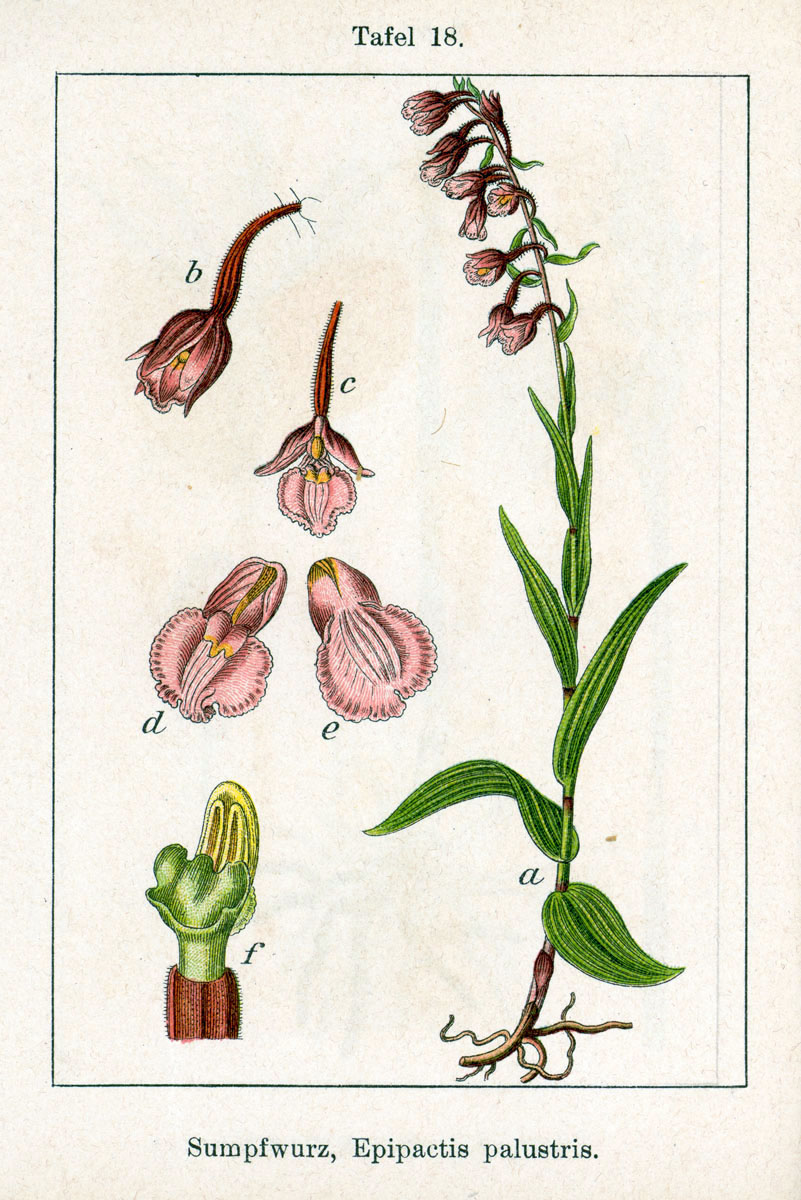|
Morgan's Hill
Morgan's Hill () is a biological Site of Special Scientific Interest between Calne and Devizes in Wiltshire, England. The SSSI was notified in 1951 and again in 1987. Topography Morgan's Hill marks the hydrological triple divide of Great Britain, where rainfall drains into the English Channel (via this River Avon), the Atlantic Ocean (via the Bristol Avon and Severn Estuary) and the North Sea (via the Kennet and Thames). Nature reserve The site is also a nature reserve of the Wiltshire Wildlife Trust. The main habitat on the site is chalk grassland, largely dominated by upright brome (''Bromus erectus''). Species present which have a particular affinity for the chalk habitat include chalk milkwort (''Polygala calcarea''), horseshoe vetch (''Hippocrepis comosa'') and autumn gentian (''Gentianella amarella''). Several scarce and notable species occur, including round-headed rampion (''Phyteuma orbiculare''), bastard toadflax (''Thesium humifusum''), fly orchid (''Ophrys ... [...More Info...] [...Related Items...] OR: [Wikipedia] [Google] [Baidu] |
Biological Site Of Special Scientific Interest
A Site of Special Scientific Interest (SSSI) in Great Britain or an Area of Special Scientific Interest (ASSI) in the Isle of Man and Northern Ireland is a conservation designation denoting a protected area in the United Kingdom and Isle of Man. SSSI/ASSIs are the basic building block of site-based nature conservation legislation and most other legal nature/geological conservation designations in the United Kingdom are based upon them, including national nature reserves, Ramsar sites, Special Protection Areas, and Special Areas of Conservation. The acronym "SSSI" is often pronounced "triple-S I". Selection and conservation Sites notified for their biological interest are known as Biological SSSIs (or ASSIs), and those notified for geological or physiographic interest are Geological SSSIs (or ASSIs). Sites may be divided into management units, with some areas including units that are noted for both biological and geological interest. Biological Biological SSSI/ASSIs may b ... [...More Info...] [...Related Items...] OR: [Wikipedia] [Google] [Baidu] |
Phyteuma Orbiculare
Phyteuma orbiculare, common name round-headed rampion or Pride of Sussex, is a herbaceous perennial plant of the genus ''Phyteuma'' belonging to the family Campanulaceae. Description ''Phyteuma orbiculare'' reaches on average of height. A deep blue, almost purple wildflower that is not as it seems: each head, rather than being a single bloom, is actually a collection of smaller ones, huddled together. The stem is erect, simple, glabrous and striated, the leaves vary in shape on a single plant, with larger, broader, ovate to lanceolate, serrated, petiolated leaves at the base of the stem and smaller, narrower, lanceolate to linear cauline leaves. The head-shaped inflorescence is a dense erect panicle of about of diameter, with usually 15 to 30 flowers. The petals are blue or violet-blue and form small tubes with an opening at the top. The outer bracts are lanceolate and usually two to four times longer than wide. The flowering period extends from May to August. The fruit is a ... [...More Info...] [...Related Items...] OR: [Wikipedia] [Google] [Baidu] |
Royal Engineers
The Corps of Royal Engineers, usually called the Royal Engineers (RE), and commonly known as the ''Sappers'', is a corps of the British Army. It provides military engineering and other technical support to the British Armed Forces and is headed by the Chief Royal Engineer. The Regimental Headquarters and the Royal School of Military Engineering are in Chatham in Kent, England. The corps is divided into several regiments, barracked at various places in the United Kingdom and around the world. History The Royal Engineers trace their origins back to the military engineers brought to England by William the Conqueror, specifically Bishop Gundulf of Rochester Cathedral, and claim over 900 years of unbroken service to the crown. Engineers have always served in the armies of the Crown; however, the origins of the modern corps, along with those of the Royal Artillery, lie in the Board of Ordnance established in the 15th century. In Woolwich in 1716, the Board formed the Royal Regime ... [...More Info...] [...Related Items...] OR: [Wikipedia] [Google] [Baidu] |
Leafield
Leafield is a village and civil parish about northwest of Witney in West Oxfordshire. The parish includes the hamlet of Langley, west of Leafield village. The 2011 Census recorded the parish's population as 945. The village is above sea level in the Cotswold Hills. It was the highest point in Oxfordshire until the 1974 county boundary changes enlarged the county. Archaeology There are a number of tumuli in the parish, including Leafield Barrow, locally called Barry's Hill Tump, on top of the hill just to the north of the village. Leafield Barrow also has archaeological evidence for being the site of a medieval motte-and-bailey castle called Leafield Castle. The castle would be situated at a position in the village which would have given it a commanding view of the settlement. There are visible earthworks present which would add to the castle's defensive capability. The castle is believed to form a similar shape to that of Ascot d'Oilly Castle. History The parish is within ... [...More Info...] [...Related Items...] OR: [Wikipedia] [Google] [Baidu] |
Imperial Wireless Chain
The Imperial Wireless Chain was a strategic international communications network of powerful long range radiotelegraphy stations, created by the British government to link the countries of the British Empire. The stations exchanged commercial and diplomatic text message traffic transmitted at high speed by Morse code using paper tape machines. Although the idea was conceived prior to World War I, the United Kingdom was the last of the world's great powers to implement an operational system.Empire Wireless Papers Past, Evening Post (New Zealand), published 1923-04-23, accessed 2010-10-03 The first link in the chain, between in Oxfordshire and |
Marconi Station
A list of early wireless telegraphy radio stations of the Marconi Wireless Telegraph Co. Guglielmo Marconi developed the first practical radio transmitters and receivers between 1895 and 1901. His company, the Marconi Wireless Telegraph Co, started in 1897, dominated the early radio industry. During the first two decades of the 20th century the Marconi Co. built the first radiotelegraphy communication stations, which were used to communicate with ships at sea and exchange commercial telegram traffic with other countries using Morse code. Many of these have since been preserved as historic places. Types of station The first radio transmitters could not transmit audio (sound) like modern AM and FM transmitters, and instead transmitted information by radiotelegraphy; the transmitter was turned on and off rapidly using a switch called a telegraph key, creating different length pulses of radio waves ("dots" and "dashes") which spelled out text messages in Morse code. Marc ... [...More Info...] [...Related Items...] OR: [Wikipedia] [Google] [Baidu] |
Epipactis Palustris
''Epipactis palustris'', the marsh helleborine, is a species of orchid native to Europe and Asia. Description ''Epipactis palustris'' is a perennial herbaceous plant. This species has a stem growing to 60 cm high with as many as ten erect leaves up to 12 cm long and up to 4 cm wide, with parallel venation. It persists as an underground horizontal stem called a rhizome, from which new roots and stems grow each year. The aerial part of the stem is upright and has a cylindrical section. The base of the aerial stem is glabrous (smooth) and surrounded with pink scales, the upper part of the stem is pubescent and slightly reddened. The flowers are 17 mm across arranged in a one-sided raceme. In the typical form, the sepals are coloured deep pink or purplish-red, the upper petals shorter and paler. The labellum at least as long as the sepals, white with red or yellow spots in the middle. Variants without most of the reddish colours of the typical form have been ca ... [...More Info...] [...Related Items...] OR: [Wikipedia] [Google] [Baidu] |
Herminium Monorchis
''Herminium monorchis'', the musk orchid, is a commonly occurring species of orchid. It is widespread across much of Europe and northern Asia from France to Japan, including China, Siberia, Mongolia, Ukraine, Germany, Italy, Scandinavia, etc. It has a localised distribution in Britain; sites where it is found include Ham Hill in Wiltshire and Noar Hill in Hampshire Hampshire (, ; abbreviated to Hants) is a ceremonial and non-metropolitan county in western South East England on the coast of the English Channel. Home to two major English cities on its south coast, Southampton and Portsmouth, Hampshire .... References External linksFirst Nature ''Herminium monorchis'' - Musk Orchid [...More Info...] [...Related Items...] OR: [Wikipedia] [Google] [Baidu] |
Coeloglossum
''Coeloglossum'' is a genus of flowering plants in the orchid family Orchidaceae. It has long been considered to have only one species, ''Coeloglossum viride'', the frog orchid. Some recent classifications regard ''Coeloglossum'' as part of the larger genus, ''Dactylorhiza'', so that ''C. viride'' becomes ''Dactylorhiza viridis''. Other sources continue to keep ''Coeloglossum viride'' separate. Under either name, the species has a wide distribution across the cooler parts of the Northern Hemisphere, covering much of Europe, non-tropical Asia (Russia, Japan, China, the Himalayas, etc.), much of Canada and parts of the United States (Alaska, Northeast, the Appalachians, Great Lakes Region, Northern Great Plains, and Rocky Mountains). It is typically found growing in moist, rich soil in wet meadows, moist or wet deciduous woods and thickets, and is frequently found on steep slopes. Etymology The generic name ''Coeloglossum'' is derived from the Greek ' meaning "hollow tongue ... [...More Info...] [...Related Items...] OR: [Wikipedia] [Google] [Baidu] |
Platanthera Bifolia
''Platanthera bifolia'', commonly known as the lesser butterfly-orchid, is a species of orchid in the genus ''Platanthera'', having certain relations with the genus ''Orchis'', where it was previously included and also with the genus ''Habenaria''. It is a Palaearctic species occurring from Ireland in the west, across Europe and Asia to Korea and Japan. It is also found in North Africa. The name ''Platanthera'' is derived from Greek, meaning "broad anthers", while the species name, ''bifolia'', means "two leaves". Identification Lesser butterfly-orchids are not to be confused with the greater butterfly-orchid, which are about the same size. Lesser butterfly-orchids are distinguished by their two shining green basal leaves, especially of the hill form, which are shorter and broader and by the angle of the pollinia. The upper sepal and petals form a loose triangular hood above the pollinia, which lie parallel and close together, obscuring the opening into the spur, which is lon ... [...More Info...] [...Related Items...] OR: [Wikipedia] [Google] [Baidu] |



